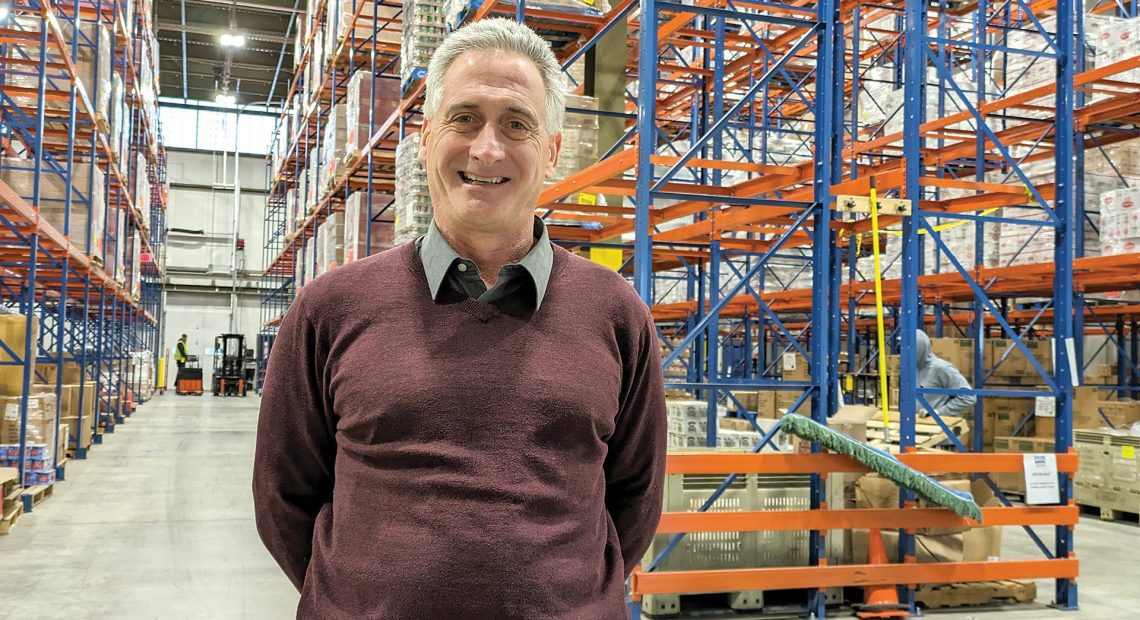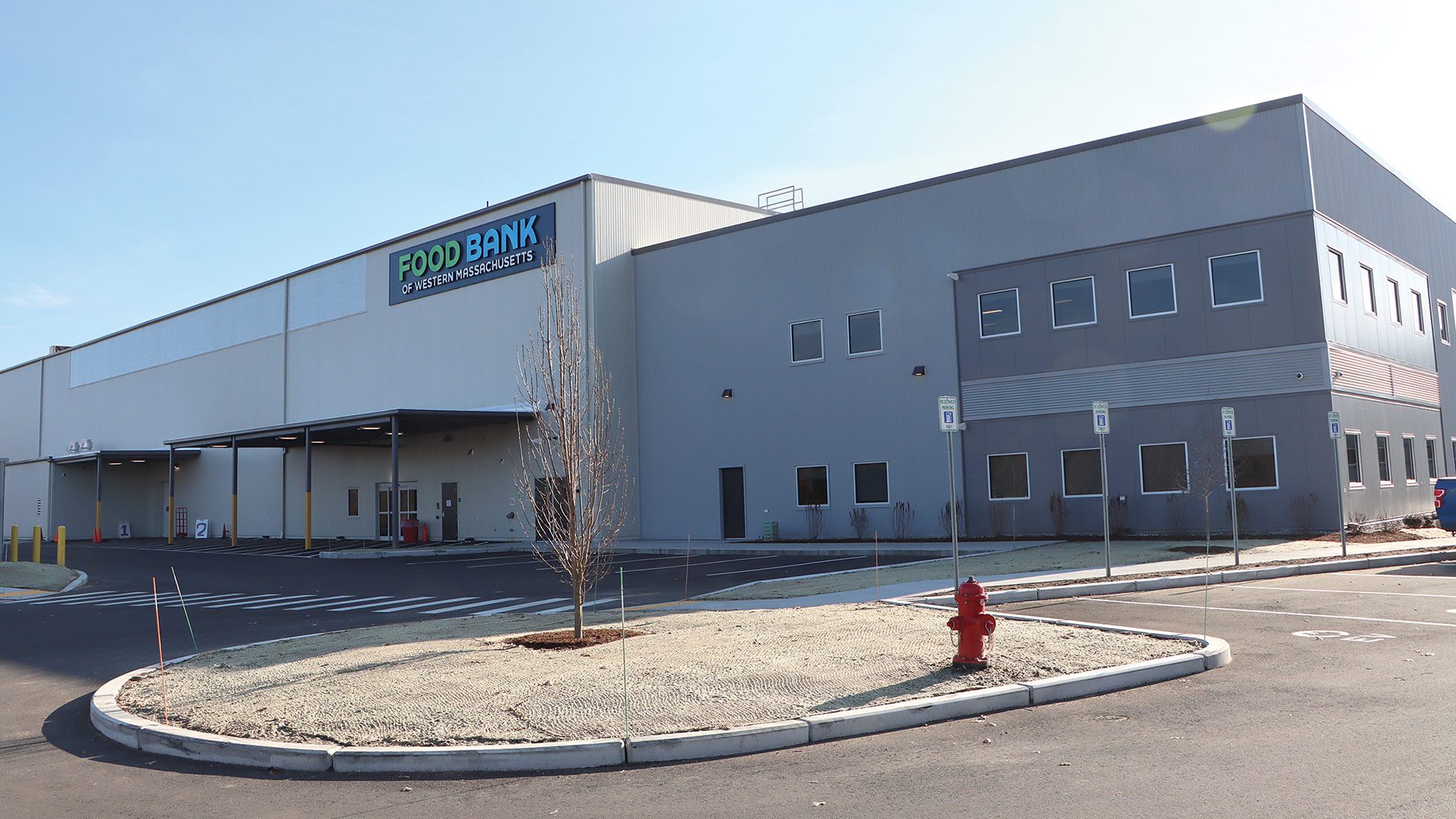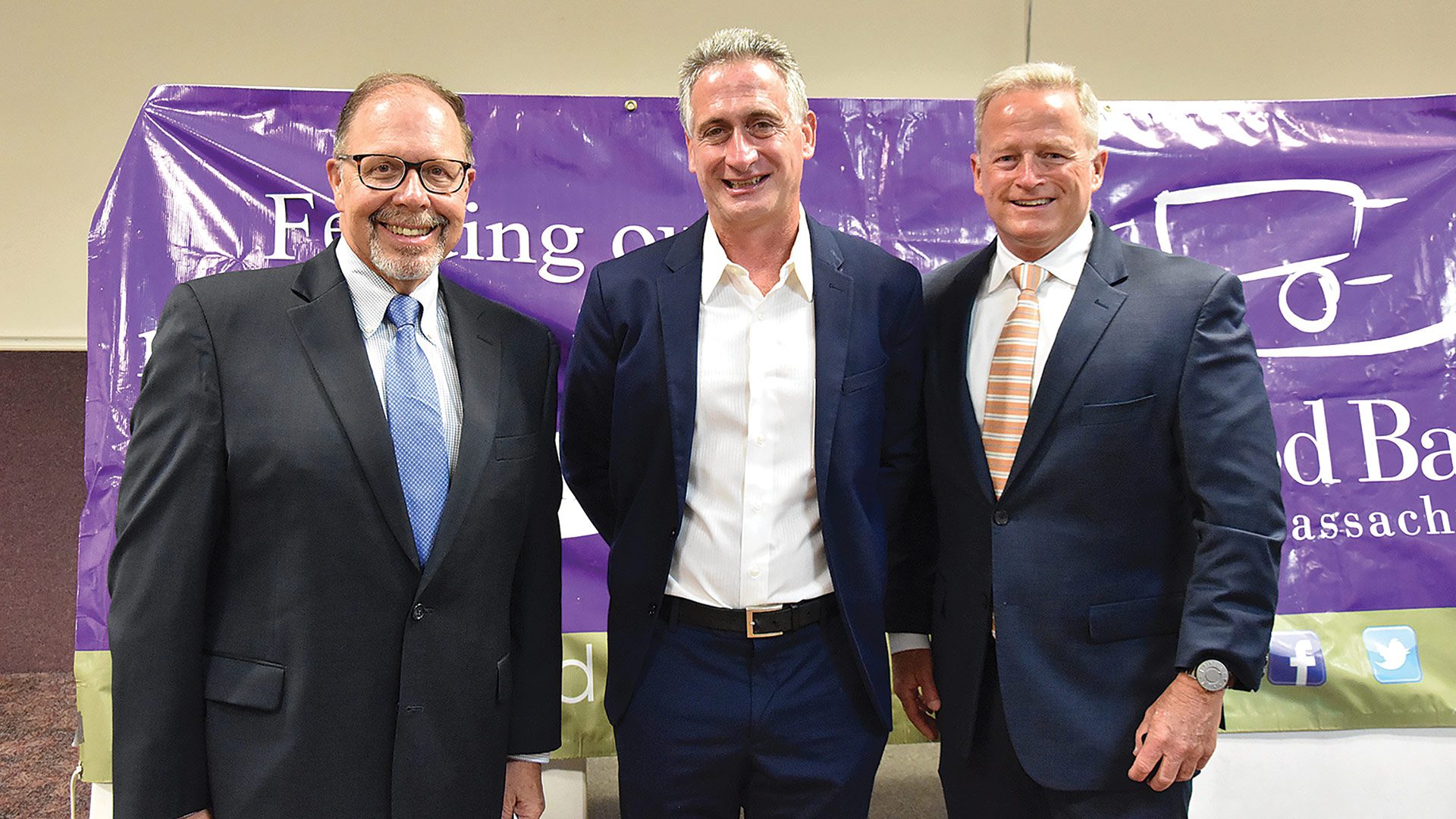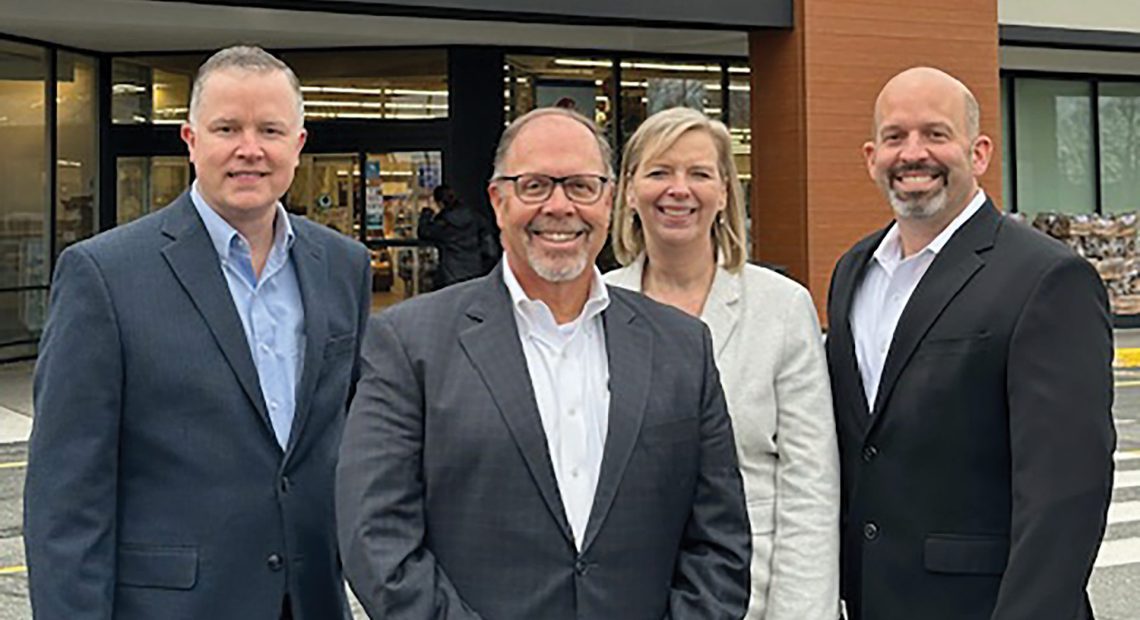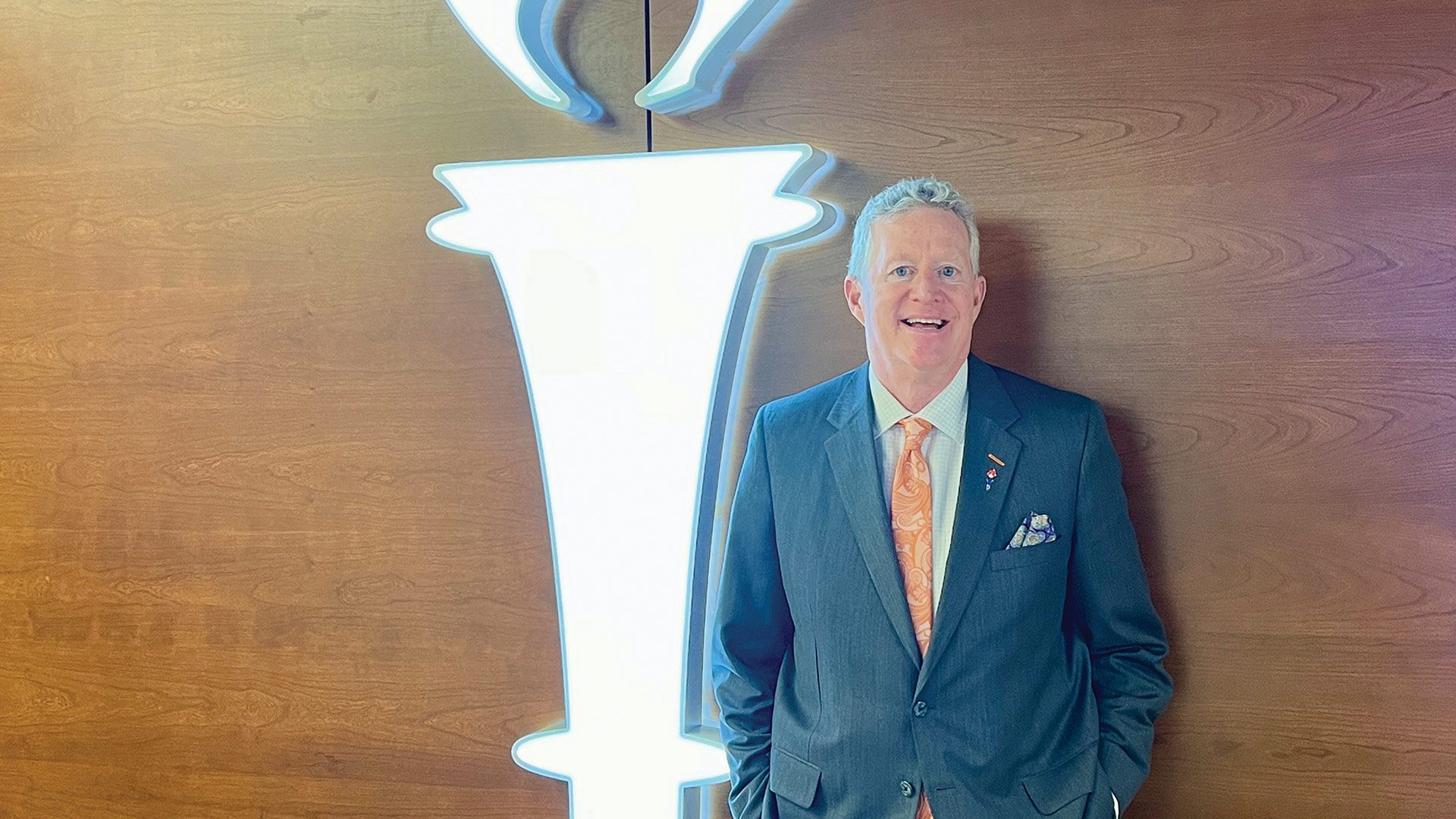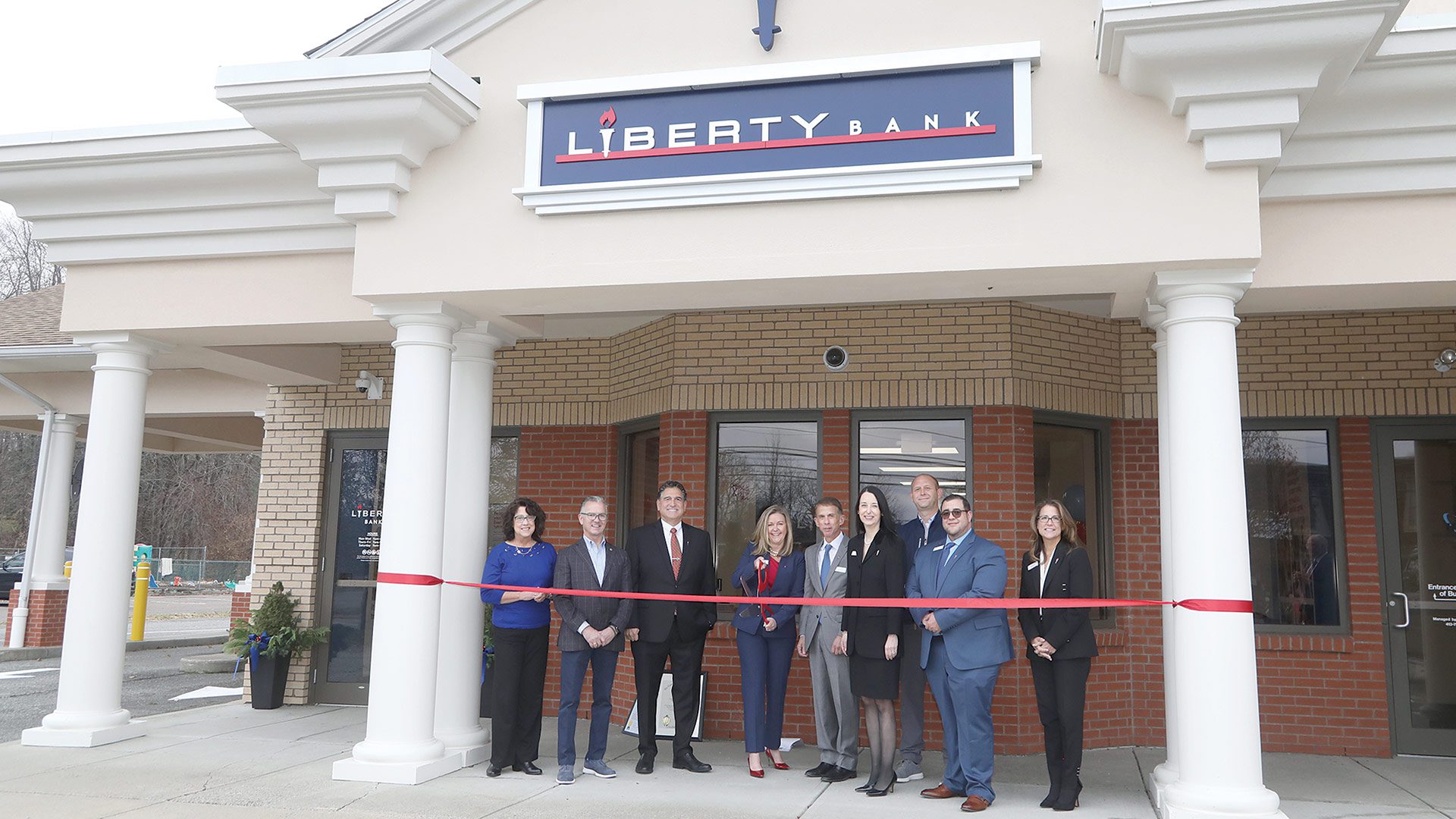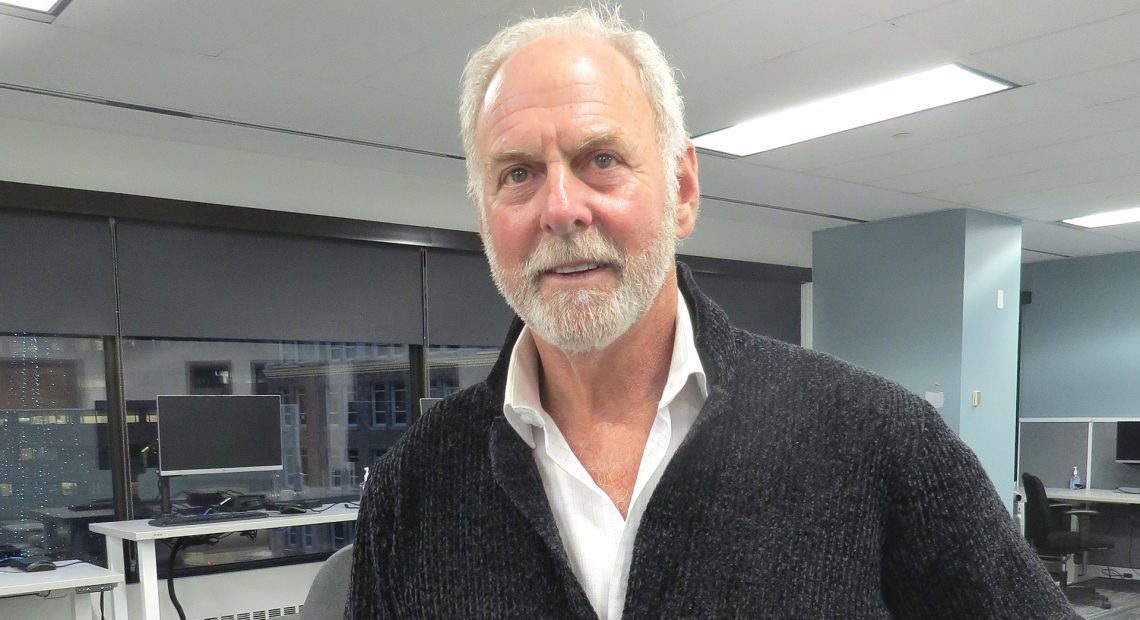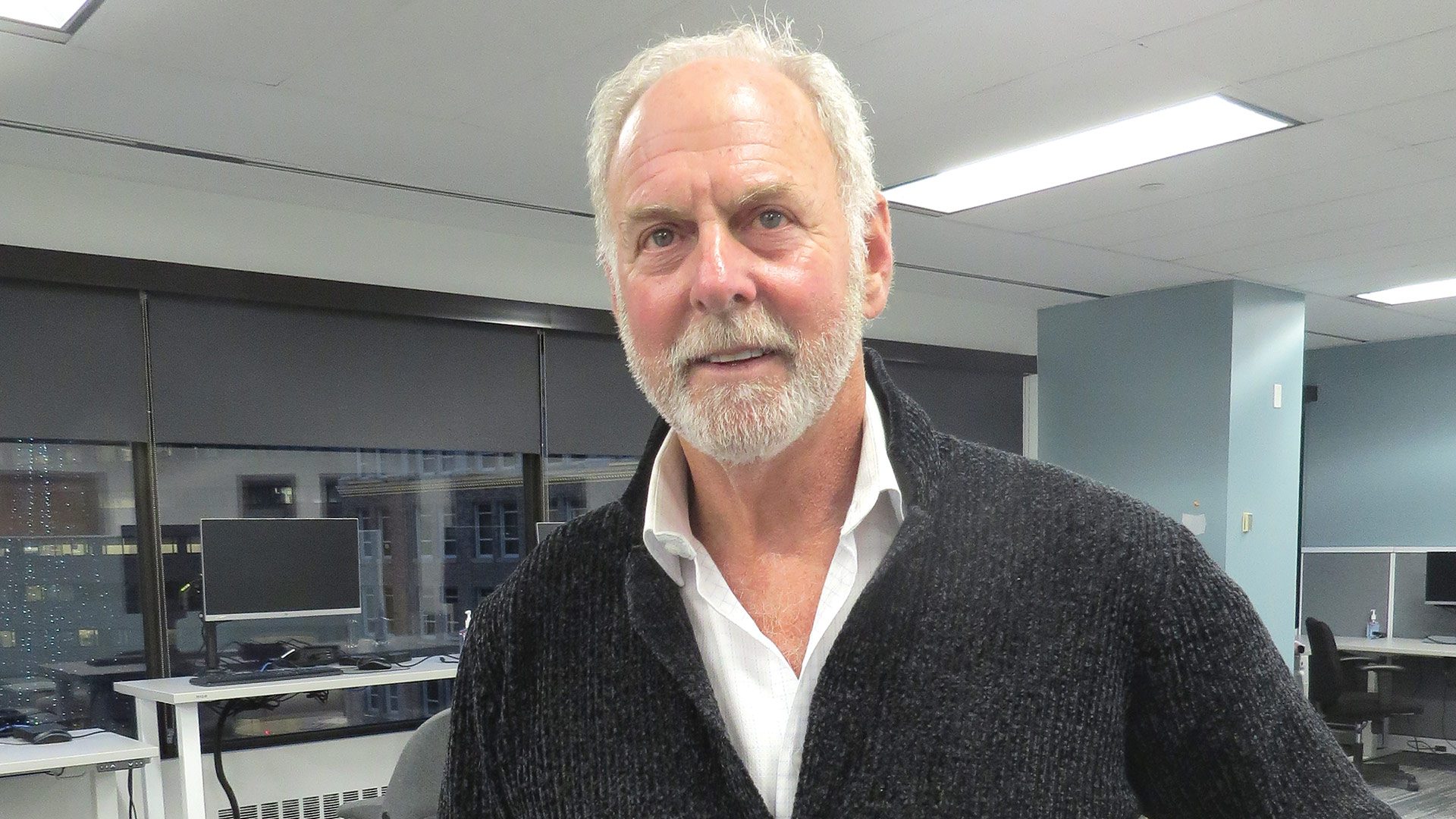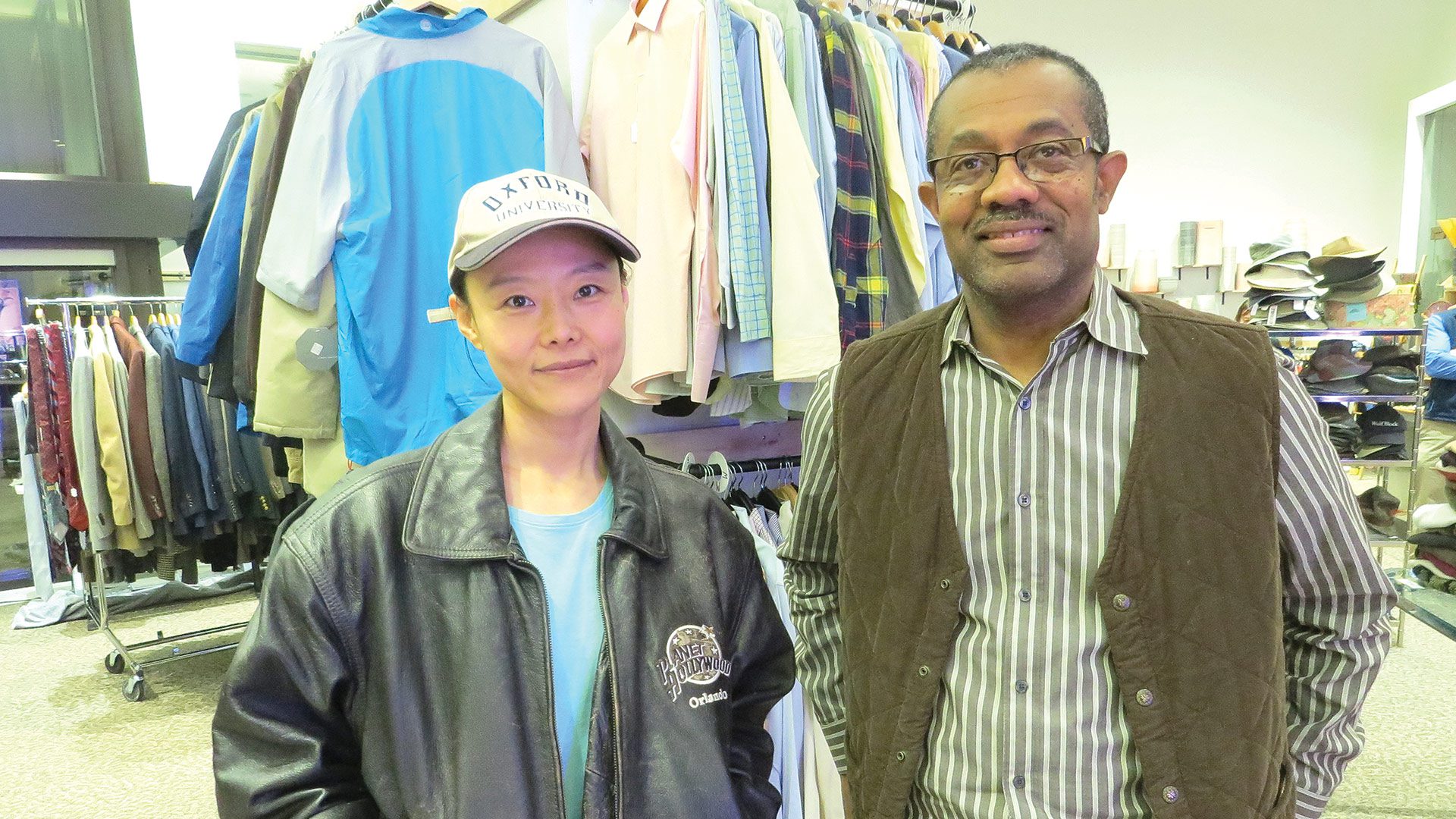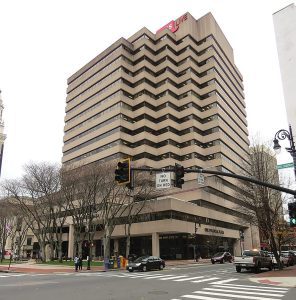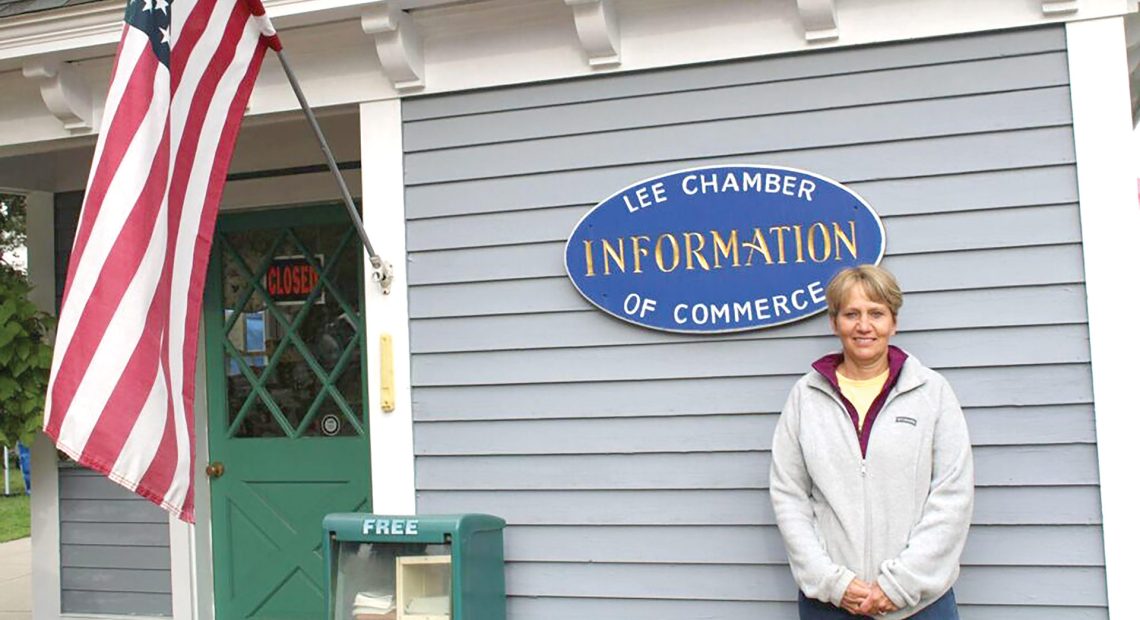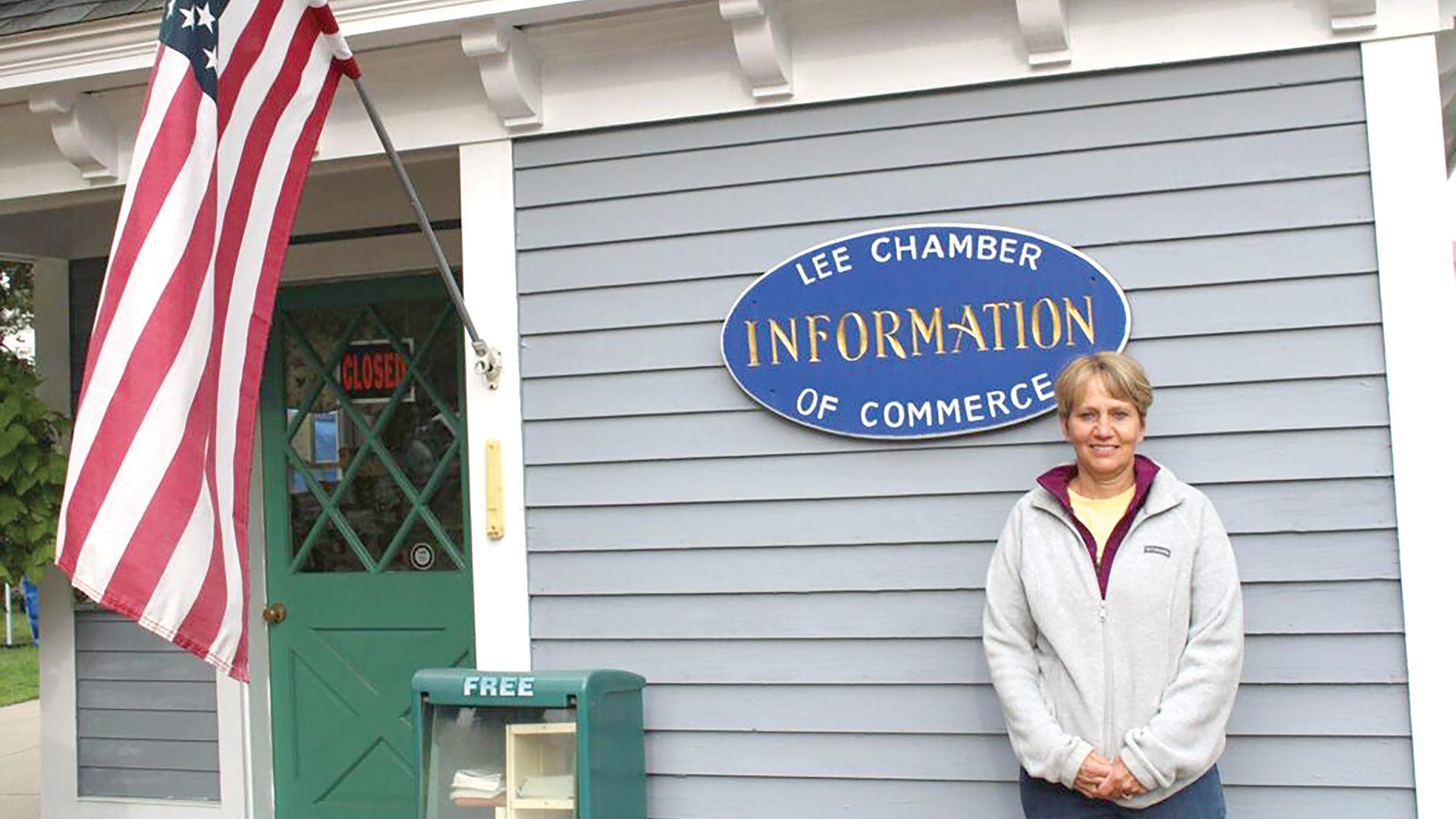Passing Thoughts

From left, Rick Bossie, Charlie D ‘Amour, Theresa Jasmin, and Michael D ‘Amour
Charlie D’Amour says his father, Gerry, and uncle, Paul — the co-founders of Big Y Foods — had an outlook on work and business management that was typical of members of their generation.
“They came away with the notion that you died with your boots on — you just kept working until the end,” he said, adding that he is of a much different mindset, one of meticulously grooming the next generation of leadership, stepping back when the time is right and letting them take the reins, and … well, not working right to the very end.
And that’s exactly what’s been happening at Big Y over the past few years and especially the past several months, steps that ultimately led to the recent announcement that Charlie D’Amour would be assuming the role of executive chairman of the board and that his nephew, Michael D’Amour, would be taking the reins of president and CEO. Also, Richard Bossie, a 40-year-employee who is now senior vice president of Retail Operations and Customer Service, will be stepping into Michael D’Amour’s roles as executive vice president and COO. The moves are effective Jan. 21, and they are all significant in nature.
Indeed, Michael’s ascension to president and CEO represents a passing of the torch from the second generation of leadership to the third as the company approaches its 90th birthday (in 2026) and contemplates where it wants to be when it reaches 100. Meanwhile, Bossie becomes the first non-D’Amour family member to become COO, another significant step and poignant example of how the company is certainly bigger than the family and takes pride in putting people in jobs that can lead to careers, including those that involve the C-suite.
For Michael, the executive changes represent the continuation of a pattern set by his uncle Charlie and another uncle, Donald, before him — from humble beginnings working at one of the supermarkets (in Michael’s case, slicing cold meat in the deli) to a succession of leadership positions, and eventually to the corner office.
“I have an opportunity to stay somewhat connected with the business but also get out of the way. There is something unique about a family business; it’s hard to completely walk away from it. For so many years, and from a very young age, I’ve been involved with the company. I’m part of the company, and the company is part of me.”
He told BusinessWest that this is an important time for the company, not simply in terms of milestone celebrations and leadership changes, but also when it comes to challenges and opportunities for continued growth of a chain that now boasts more than 70 supermarkets as well as Table & Vine, which specializes in wines and liquors, and Big Y Express gas and convenience stores.
He said the company remains in a strong growth mode, and he can envison perhaps 100 or more stores by the time of the company’s centennial through a likely mix of organic growth and acquisition.
Bossie agreed, noting that, beyond continued growth, the company will have several other focal points in the years to come, especially in the broad realm of workforce.
The severe crunch that came in the wake of the pandemic when companies across all sectors, but especially this one, struggled to fill vacancies and fully staff stores is mostly in the rear-view mirror, but other challenges continue, including those involved with meeting the needs of a changing, more demanding workforce.
“There have been massive changes there since the pandemic, but even before then,” he explained. “There are greater expectations, and greater needs, now when it comes to the tools they need to do their jobs.”
As for Charlie D’Amour, 72, who had become the face of the company over the past several years, he said will step into what will mostly be an advisory role, one with a job description that he will write as he goes.
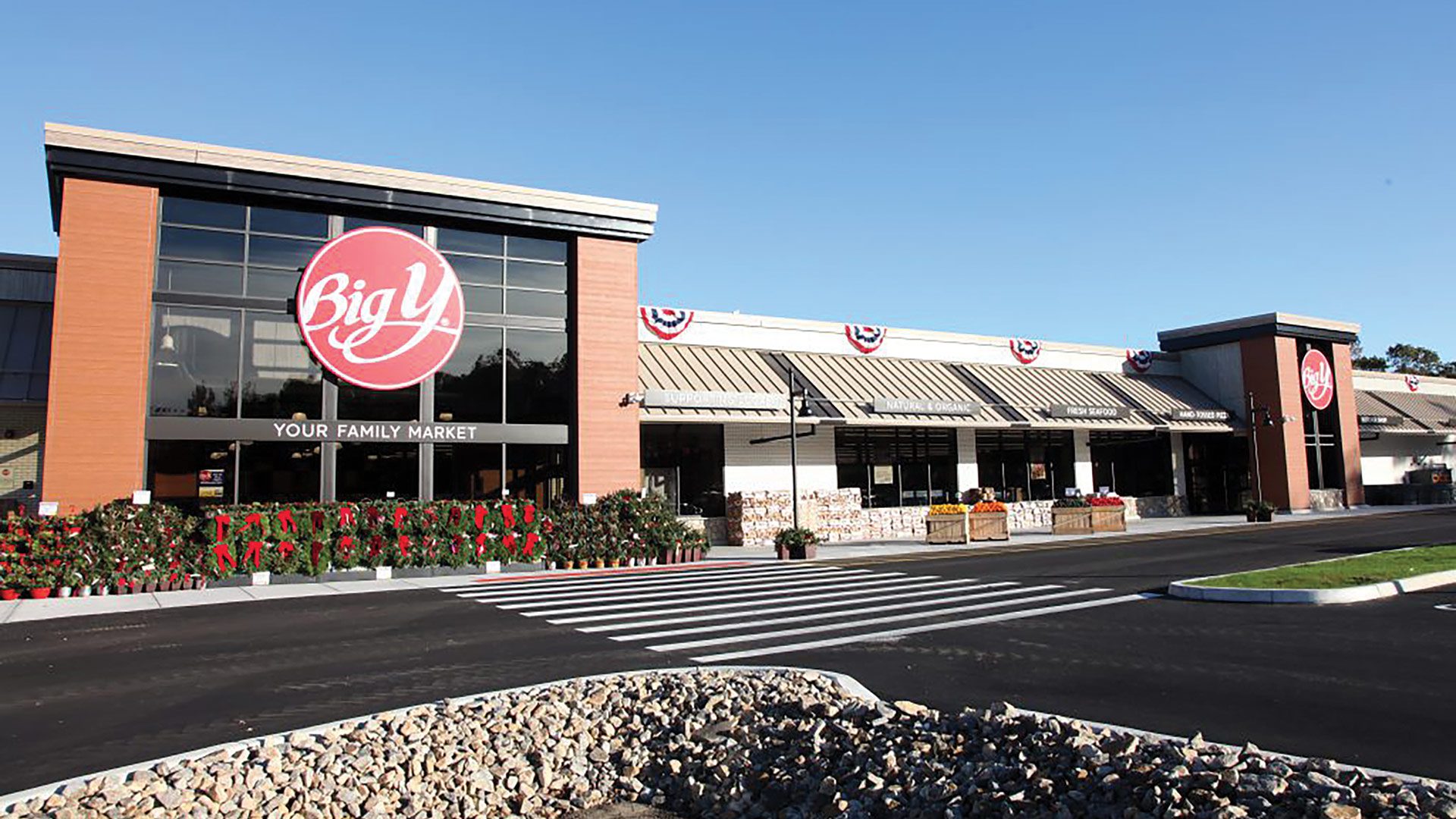
Michael D’Amour says he can envision 100 or more supermarkets by the time Big Y turns 100 in 2036.
“I have an opportunity to stay somewhat connected with the business but also get out of the way,” he said of this new role. “There is something unique about a family business; it’s hard to completely walk away from it. For so many years, and from a very young age, I’ve been involved with the company. I’m part of the company, and the company is part of me.”
For this issue, BusinessWest talked with senior management at Big Y about these changes in leadership and what will come next for the one of the region’s largest employers.
Produce Department
Michael D’Amour told BusinessWest that, while he — like other members of the second, third, and now fourth generations of the family — grew up in Big Y stores, handling a number of different assignments, he didn’t exactly set out to make this a career.
“In college, I was thinking about more about criminal psychology and things like that,” he said, adding that, when he returned home after graduating, he needed a job and, at his mother’s urging, took one working full-time in the deli department at the Big Y on Memorial Avenue in West Springfield.
After learning that side of the business, he moved on to other areas of supermarket operations and management, including the assumption of a lead role in creation of the food-services department that exists today, one that offers pizza, sandwiches, and many other options.
“We did business much the same way for decades, but over the past five years, the pace of change has greatly accelerated. We have to stay current, we have to stay educated, we have to stay knowledgeable, and we have to be able to share that wisdom and knowledge with our teams out in the stores.”
He would go on to open the company’s new store in South Windsor, Conn. in 2001, before moving on to other areas, including sales, produce, and fresh offerings, and eventually becoming vice president of Sales and Marketing and then COO in 2019. Since then, along with his uncle, Charlie, he has been a key face of the company and many of its recent initiatives..
Michael said he will bring to his new roles a leadership style he saw in his predecessors and is eager to emulate, one grounded in “listening more than we speak,” as he put it, giving employees at all levels the tools they need to succeed and focusing on teamwork.
As he talked, he made it a point to use ‘we,’ not ‘I’ when talking about leadership.
“We have an eye toward growth and innovation, not just with technology, but across the board,” he said. “We want to develop tools and processes to make our employees’ jobs easier and more effective, and also add to the customer experience.”
As for Bossie, he came to Big Y in 1986 after returning to the region after living in Alaska and working in a supermarket as a part-time service clerk.
He started working nights stocking shelves in the store in Great Barrington, and has since worked in all areas of store operations, including store director and, later, district director until his appointment as director of Operations in 2010.
In 2019, he was named senior vice president of Retail Operations and Customer Experience, where, in addition to his operations oversight, he also leads other retail banners such as Big Y Express gas and convenience and Table & Vine, along with teams for asset protection and continuous improvement.
He joins Michael D’Amour and Theresa Jasmin, the company’s chief financial officer, who joined Big Y nearly two decades ago and worked in a number of capacities before becoming CFO in 2020, as well as several of Michael’s siblings and cousins, as what would be considered the proverbial next generation of leadership at Big Y.
This new leadership group has come into place through careful consideration and a hard focus on succession planning, something that all ventures, and especially family businesses, need to make a priority, Charlie said.
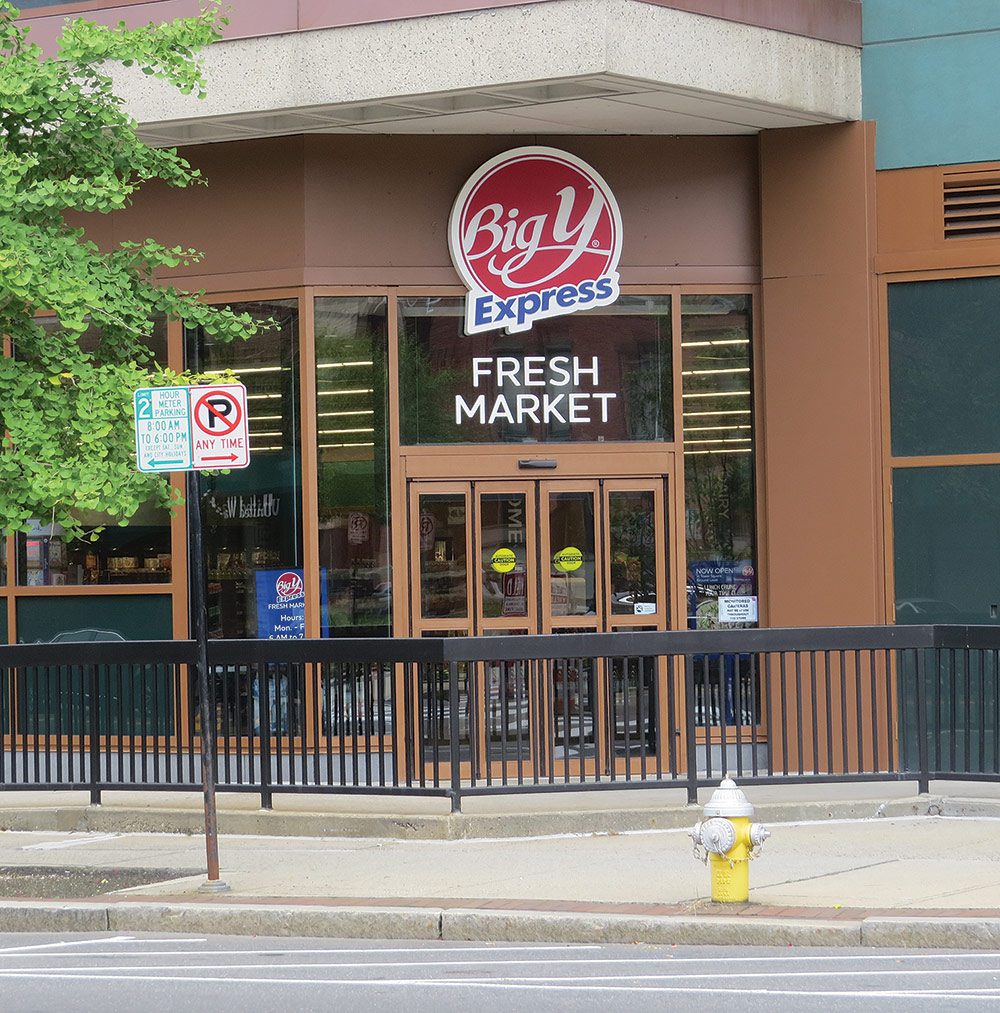
The Big Y Express Market in downtown Springfield is one of the many additions to the company’s portfolio in recent years.
“We spend an awful lot of time across the organization looking at succession, planning for it, and making sure we’re thoughtful about it — and working at all levels of the team to get ready for this particular point,” he told BusinessWest.
“There are not a lot of companies that can brag about passing the reins on to the next generation,” he went on. “And I’m very excited that we’ve been able to do that. The second generation has been involved in it, we didn’t screw things up too, too badly, and now the third generation can step in and continue the growth that we’ve enjoyed.”
What’s in Store?
As he talked about what comes next, for the new leadership and the company as a whole, those we spoke with said the company has achieved a strong pattern of growth, and the goal will be to continue this ‘little run,’ as Charlie D’Amour called it.
In addition, Michael D’Amour said he wants the company to build on its reputation as a great place to work, efforts that have culminated in awards such as listing by Forbes as a ‘Best-in-state Employer’ in Massachusetts and Connecticut and recognition from Newsweek as one of ‘America’s Greatest Workplaces for Diversity and Women.’
“It’s becoming harder and harder, given the environment in Massachusetts and Connecticut, to get development of new sites going. As the development costs continue to increase, increase, increase, we’ve had to walk away from some locations because it didn’t make any financial sense anymore.”
“We’ve made a lot of progress over the past few years, but we still have a long way to go, and for us this is a never-ending journey,” he said. “It’s a point of focus for us along with innovation and growth. We do a lot to educate and grow our employees — it’s turned out to be a great strength of ours, to be transparent with information as best we can and to help them grow, as employees but also as individuals.”
Bossie agreed, noting that, as the workplace evolves and the workforce becomes increasingly dominated by the younger generations, companies must responsive to their employees’ needs and expectations if they want to be successful.
“We have to be focused on the things they like to do and want to do, more so than me working night crew in 1986,” he said. “That kind of work might not be appealing to this latest generation of employees that we have, so we have to manage our business differently; we have to employ different tools and strategies and continue to ask, ‘what makes our workforce most satisfied and most engaged, and how can they serve our customers the best?’
“We did business much the same way for decades, but over the past five years, the pace of change has greatly accelerated,” he went on. “We have to stay current, we have to stay educated, we have to stay knowledgeable, and we have to be able to share that wisdom and knowledge with our teams out in the stores.”
As for growth of the company’s portfolio of supermarkets and other facilities, there will opportunities for organic growth and acquisition, and especially the later, said Michael D’Amour, adding that the company has already seen some of these opportunities, and there will be more in the years to come.
“There are some companies that don’t have succession plans, and others that have been struggling since the pandemic,” he noted, adding that there are independent stores and several smaller chains of stores that could become acquisition targets in the near future. “We’ve seen some opportunities already, and we’re going to continue to look at them and vet them fully; we think that’s going to be a big part of our growth over the next few years.
“We’re not going to buy Kroger tomorrow,” he went on, referring to the Ohio-based supermarket giant. “But something digestible, anything between one store and 25 to 30 stores tops, and it has to be contiguous to our marketplace; we’re not going to leapfrog into Minnesota or Florida. We’re going to be very opportunistic with our vehicles for growth.”
Jasmin agreed, noting that the company has always taken a calculated, thoughtful approach to growth — not growing for growth’s sake — and that this mindset will continue moving forward.
Charlie D’Amour concurred, noting that acquisition will almost certainly be the preferred path to continued growth, given the mounting challenges to finding sites for new stores and then clearing all the hurdles on the way to cutting a grand-opening ribbon.
To make his point, he cited the chain’s store in Clinton, Conn., a facility that took six years to open from start to finish, more than double the time it would have taken maybe a decade or so ago.
“It’s becoming harder and harder, given the environment in Massachusetts and Connecticut, to get development of new sites going,” he said. “As the development costs continue to increase, increase, increase, we’ve had to walk away from some locations because it didn’t make any financial sense anymore.”




